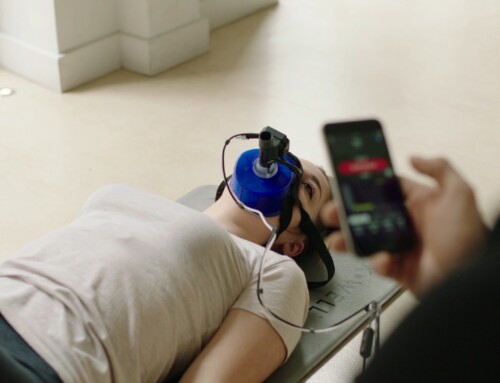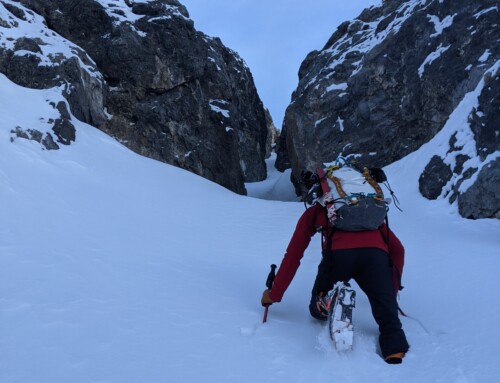Have you ever ran, and then jumped into icy cold water?
No, not the popular New Year’s polar bear plunge. We’re talking about ice baths; where you fill your tub with ice and water, and then willfully soak to aid in recovery and reduce muscle soreness.
The topic of icing and ice baths has become quite controversial over the past few years, especially with the publishing of Iced! by Gary Reinl, in which Reinl argues that icing is an outdated and illusionary form of care. Here at Evolution Healthcare and Fitness, we decided to take a look into some research for ourselves.
The gist of the research is that most of it is inconclusive and/or conflicting. Anyone out there could write an article arguing whether ice baths are good or bad, and find research to back up both sides. Part of the reason it’s so difficult to get solid results from a study is because of the placebo effect. Participants can usually tell whether or not their muscles are being iced. This takes away from the randomization and influences the outcomes of studies.
So here’s our advice: If you think icing works for you, then do it. If you think icing is harming your ability to work out, then don’t do it. For those of you that want to ice, and want to know the best ways to utilize the ice bath as a form of contrast therapy, the information below might help you get the most out of your experience and add to your overall training plan as much as possible.
The first key element is to know when an ice bath is appropriate. To be clear, this is not for icing acute injuries. The guidelines and methods for that are different; these suggestions are for ice baths to supplement intense workouts that will undoubtedly leave you sore so you can recover quicker return to training sooner.
Most research agrees that the time to ice bath is after a workout; that is assuming the affects you want include repairing the damaged muscles, and decreasing inflammation to reduce pain. The research is also consistent in that the temperatures range from around 48 degrees and 56 degrees Fahrenheit, give or take a few degrees.
Timing varies a bit more between studies. Ice baths have been tested anywhere from 30 seconds to 20 minutes. In order to let the ice take full effect, you’ll want to be in the tub at least 5 minutes. Twenty minutes is plenty long, even if the water is on the warmer side of the scale. If you go too long, you risk skin and nerve damage. Perhaps the studies that are testing ice baths for less than 5 minutes aren’t letting the ice take full effect, and are therefore producing inconclusive results.
therefore producing inconclusive results.
Numbing the pain is far from the only goal of an ice bath and is more or less a superficial benefit. Although numbing your body might feel like the goal, icing also constricts the blood vessels, decreases inflammation, decreases blood flow, and increases the amount of chemical waste in your cell space (mostly because it isn’t being flushed out). The real benefits of icing occur when your body rewarms. Much of the waste from the use and damage to your muscles, such as lactic acid, gets flushed out as the blood flow increases. This is referred to as contrast therapy.
The Science
Vaile et al compared cold water immersion, hot water immersion, and contrast therapy with passive recovery. They recorded how the three types of treatment affected the key signs of delayed onset muscle soreness. This particular study found that cold water immersion and contrast therapy decreased perceived pain and reduced functional deficits of delayed onset muscle soreness. They found hot water therapy to be ineffective for everything except isometric force.
Rowsell et al did a similar study in soccer players, and discovered that the physical performance of the athletes didn’t change; however the perceived pain and general fatigue and soreness decreased after cold water immersion. Many times the perception of feeling less sore will help you through your next day’s activities.
Strategically, the best time to take an ice bath is when you don’t have the capability to let your body recover naturally. The pain and soreness that normally occurs after an intense workout is initiated by the inflammation process which is your body’s natural way of repairing damaged muscles. In order to gain the maximum strength from a workout, you must allow this process to take place. You don’t get stronger while working out, you get stronger while rebuilding during recovery! Ice baths are a shortcut for soreness and pain, and are especially applicable to tournament style workouts. You play or run all day, and then have to get up and do it again, at the same caliber, the next morning. In these scenarios your training is over, you are doing what you prepared for, so losing the opportunity to fully recover to gain maximum strength isn’t as important. In this case it is more about the ability to perform at your best in a short amount of time, and icing is a great way to speed up that process.
The big takeaway from the research, and the opinions of many professionals, is that ice baths change your body. If those changes are for the right reasons at the right time, then ice baths can be beneficial. Listen to your body, and do what you think helps you get the highest performance out of your workouts.
SOURCES
Crystal, Naomi J. “UNH Research: Post-Run Ice Baths Not Beneficial for Strength, Soreness.” UNH Media Relations. University of New Hampshire, 19 Aug. 2013. Web. 27 Apr. 2015.
Rowsell, Greg J., Aaron J. Coutts, Peter Reaburn, and Stephen Hill-Haas. “Effects of Cold-water Immersion on Physical Performance between Successive Matches in High-performance Junior Male Soccer Players.” Journal of Sports Sciences 27.6 (2009): 565-73.
Schmitz, Andy. “8 Ice Bath Dos and Don’ts.” ACTIVE.com. N.p., n.d. Web. 27 Apr. 2015.
Vaile, J., S. Halsom, N. Gill, and B. Dawsom. “Effect of Hydrotherapy on the Signs and Symptoms of Delayed Onset Muscle Soreness.” European Journal of Applied Physiology102.4 (2008): 121-22.
Photos: http://www.morguefile.com/archive/?referrer=1660250&srh_field=ape+man#/?q=dance&sort=pop&photo_lib=morgueFile



